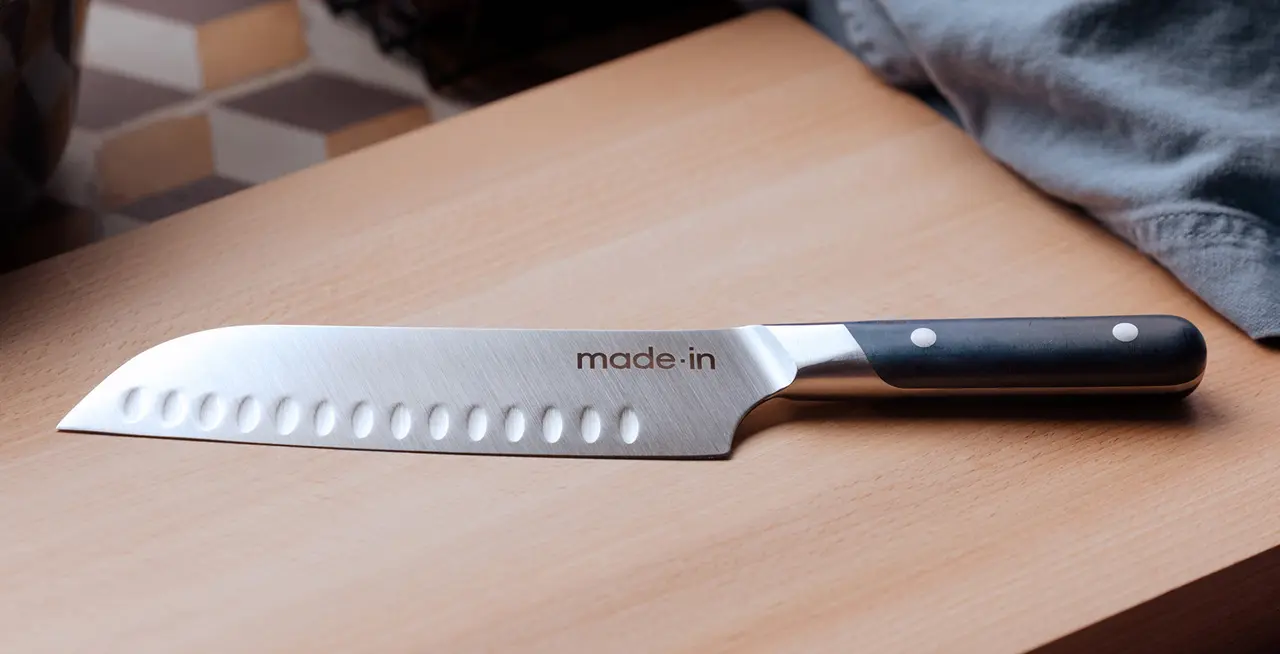If you’re looking to stock your kitchen with a great knife set, make sure that the set you select has both a santoku and a chef knife. Both will come in handy for prepping any number of kitchen ingredients—and as much as the two knives may look similar, they are actually quite different.
By understanding the differences between a santoku and a chef knife, you can make an informed decision regarding when to use each knife. Here's what you need to know.
What Is a Santoku Knife?
Like a chef knife, the santoku knife is a general-purpose knife that's commonly used in home and professional kitchens for chopping, dicing, mincing, and slicing, especially vegetables. In many ways, a santoku is simply a Japanese version of the chef knife—but the differences don't end there.
Santoku knives are typically smaller than a standard chef knife, ranging in size from anywhere from 7" to 5" or smaller. Santoku knives also tend to be made of thinner and harder steel than chef knives, which—when combined with the wide sheepsfoot blade—makes them better suited for precision cutting. Our 7" Santoku Knife also features 28 flutes on its blade to prevent food from sticking, making it the perfect tool for slicing large quantities of vegetables.
How to Use a Santoku Knife
Santokus are most often used for chopping, dicing, and mincing. Because of their precision edge, they're especially useful for julienning thin slices of vegetables and meats. The wide blade associated with a santoku also makes it useful for "scooping" food off of a cutting board in place of a bench scraper.
How to Care for a Santoku Knife
Like other blades, santoku knives should be hand washed and dried to prevent rusting or other damage. When not in use, the best way to store a santoku (or any other knife, for that matter) is to place it in a wooden knife block or in-drawer organizer.
Occasionally, the knife on a santoku blade may need to be honed or sharpened, which can be done at home or by a professional.
What Is a Chef Knife?
Compared to santoku knives, chef knives feature a broad blade that curves upwards to create a thicker, heavier spine, ideal for the rocking method of cutting. Their long profile makes them the ideal for a multipurpose knife, and is likely what comes to mind when you think of a kitchen knife.
Chef knives typically come in a multipurpose 8", as well as smaller and larger sizes.
How to Use a Chef Knife
Chef knives are ideal for completing any type of cut that requires you to rock your blade forward. Generally, this makes the chef knife best for complex cuts, as well as for disjointing meat by cutting through cartilage and skin. Many people also prefer the chef knife for smaller tasks, like slicing cheese and chopping or dicing vegetables or fruit.
How to Care for a Chef Knife
Caring for a chef knife is similar to caring for a santoku. It’s important to wash only by hand, and to hone or sharpen when necessary. Other than that, chef knives are fairly easy to care for—just be sure to store correctly when not in use.
Do You Need Both?
While the knife you should use will depend on the type of cut you need to make and the ingredients that you're working with, it’s important to have the necessary tools in your kitchen to be successful. Because a santoku knife can be used to cut very thin slices, this makes it ideal for slicing vegetables and meats when a recipe calls for them to be cut finely.
A chef knife, on the other hand, may be a better option if you're working with meat that needs to be disjointed (such as a whole chicken wing). Chef knives are also great for everyday chopping, mincing, and dicing.
Ready to Chop?
No matter what you’re cutting, check out our collection of fully forged, full tang Knives. Crafted in France by 5th generation bladesmiths, each blade in our Knife Collection—including the Santoku and Chef Knife—are specifically designed to hold their weight in the world’s best kitchens, including yours.


































